Best prosumer cameras compared: Canon vs. Fujifilm vs. Olympus vs. Nikon vs. Sony
Note: This article was first published in the February 2017 issue of HWM.
Prosumer camera shootout: 2017 edition
Smaller, lighter, and more affordable while offering professional-level performance. Those are the hallmarks of prosumer cameras that appeal to both professionals and serious enthusiasts alike. You may recall that we did a similar shootout just last year between the Canon EOS 80D, Nikon D500, and Sony A6300 just last year. Well it seems we might have been a little too hasty there, as both Canon and Sony surprised us with year-end additions to their lineup in terms of the Canon EOS M5 and the Sony A6500. Fujifilm also was ready to join the fray with the release of their own flagship APS-C DSLR-style offering - the X-T2, and Olympus also had their new flagship camera, the Micro Four Thirds O-MD E-M1 Mark II. So here's a more complete roundup of the prosumer offerings in the camera world today.
Bear in mind that one of our key criteria is that cameras compared in this roundup must be released in the year of 2016. So while there may be other suitable contenders price-wise, they aren't new and may not compete favorably in terms of features offered.
Here's a quick round up of how the cameras stack up against each other in terms of specifications:-
|
|
|
|
| |
|
|
|
|
| |
|
|
|
|
| |
|
|
|
|
| |
|
|
|
|
| |
|
|
|
|
| |
|
|
|
|
| |
|
|
|
|
| |
|
|
|
|
| |
|
|
|
|
| |
|
|
|
|
| |
|
|
|
|
| |
|
|
|
|
| |
|
|
|
|
| |
|
|
|
|
| |
|
|
|
|
| |
|
|
|
|
| |
— | — | — |
|
| |
— | — | — |
| — | |
— | — | — | — |
|

Canon EOS M5
The Canon EOS M5 is the latest in Canon’s line of M-series mirrorless cameras, dating back five years to the very first EOS M released back in 2012. These cameras have previously been enthusiast-oriented offerings, eschewing full camera controls for picture modes and simple dials that you’d more likely see on compact cameras than one that allowed for interchangeable lenses.
It was a confusing approach that gave you the option of using better lenses to suit your photography style but yet didn’t give you the controls to easily take the full advantage of them. Indeed, relative to their other products, the early EOS M models haven't fared as well, so the EOS M5 represents a welcome change in approach.
This model features a 24MP APS-C sized sensor and a decidedly more SLR-like body design with a handgrip and provision for an electronic viewfinder. There’s a decent 2.36M-dot OLED option, and that’s paired with a 1.62M-dot tilting rear LCD with touch functionality. The nice thing is that the touch capabilities of the EOS M5 aren't limited in any way, so you can use it to navigate menus, select AF points, and pinch to zoom just like you would on your smartphone.

That's not to say that Canon has skimped on the physical controls though; on the contrary, you'll find the full complement of dials and buttons on the compact 115.6 x 89.2 x 60.6mm body. So you truly do get the best of both worlds with this camera. It’s extremely easy to use despite it being the smallest camera in this shootout (and impressively packs an APS-C sensor inside for its size).
It's also apparent Canon is starting to put some of what their competitors are doing. For example, there's a new touch and drag function on the rear LCD screen that works much like what was implemented on the Nikon D5500. When enabled, simply run a finger across the rear LCD to reposition the AF points. This works with the viewfinder up to your eyes too, thus offering a handy option for AF point placement.
Dual-Pixel AF also means that focus is also much faster with the EOS M5 compared to previous EOS M series cameras, though it still isn’t as fast as the EOS 80D or any of the other cameras in this shootout. That's probably because it has the least number of focus points – 49 – when every other camera in this category has at least 100.
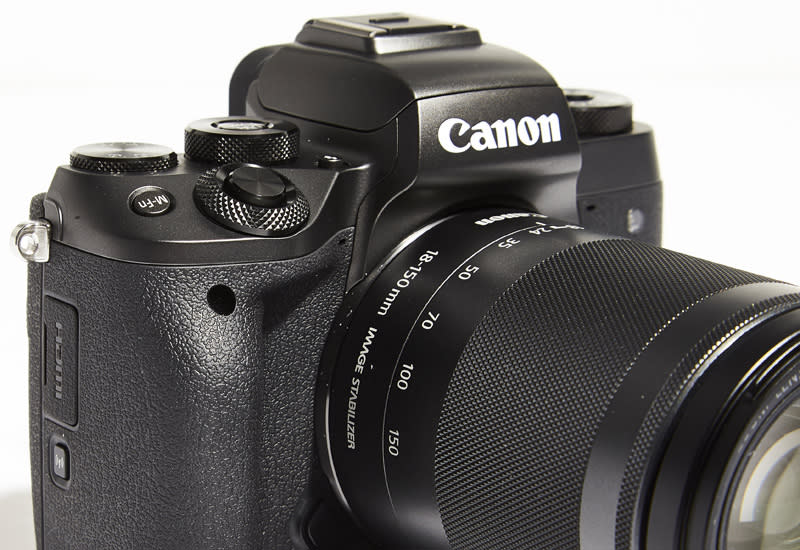
And this is where there's a caveat in terms of AF selection. Where other cameras allow you to go down to individual AF points, even the "1-point" AF option on the EOS M5 offers a rather large rectangle that can’t be resized, so it’s hard to say just how precise the focus can get.
Running on Canon’s DIGIC 7 Image Processor, the EOS M5 is capable of capturing images with an ISO range of 100-25,600. It also does continuous shooting at a respectable rate of 9.0 fps, with a buffer that allows it to capture up to 26 shots (JPEG large) before slowing down. That's less than half of what the Fujifilm X-T2 can do though, and just over 10% of what A6500 can do! Suffice to say, Canon still has quite a bit to go to catch up in this department.
The EOS M5 also lags behind in terms of video capabilities, offering only Full HD 60p recording, without zebra patterning to warn of overexposure. Thankfully though, it makes up for this by offering impressive optical (with supported lenses) and digital image stabilization.
The camera also comes with built-in Wi-Fi, NFC and Bluetooth low-energy connectivity for transferring images to smartphones, tablets and PCs. Battery life is rated for up to 295 shots on a single charge, which is unfortunately the lowest in the group of cameras compared. Its limited stamina hints that it's a camera that's meant for more casual use, though one can also argue that a smaller battery helps to keep the camera weight down. Indeed the camera is light, at 380g for the body alone.
Even in terms of price, the Canon EOS M5 is the most 'affordable' in this round-up with the body-only price tag pegged at S$1,499 and kit lens bundle options go up to S$2,099. Will the camera's lightweight, compact body and a lower entry price help it even out its standings against the big boys? Read on to find out.

Fujifilm X-T2
The X-T2 is Fujifilm's top-of-the-line DSLR format camera, and it’s built around the 24.3MP X-Trans III CMOS sensor. It follows after the very successful X-T1 camera from 2014, and carries over many of its strengths while fixing some weaknesses.
For example, the X-T2 is still weatherproof and dustproof, with three large command dials on the top for control of the main settings. The movie record button is gone – access to movie mode is now via the drive mode lever. In practice, this works fairly quickly, and we think it’s much better than the tiny record button before.
Also improved, is the rear LCD. While it still doesn’t offer touch functions, the screen now incorporates an extra hidden latch that allows it to flip open as well as out. Basically, you can now tilt the screen upwards to face you when holding the camera in portrait orientation. That's a boon for those of us who've ever tried taking portrait-format shots from low angles, and saves you from cranking your head sideways.
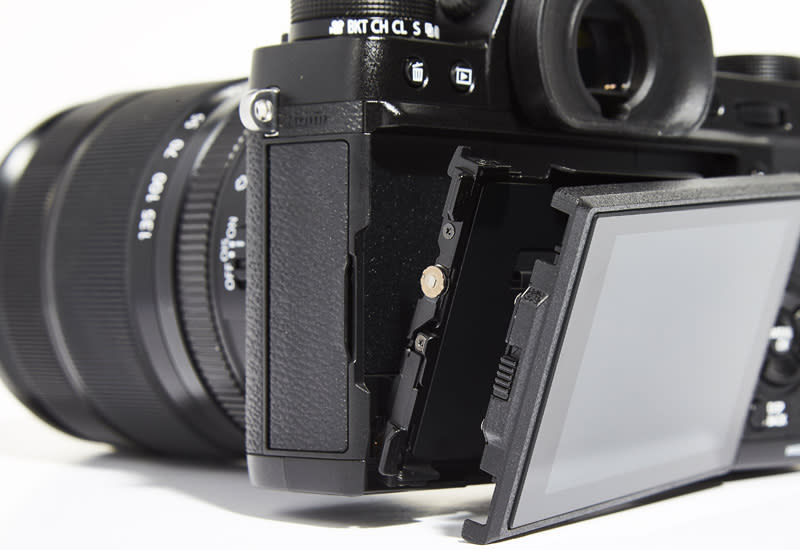
We like that the AF-joystick from the X-Pro2 has been carried over to the X-T2. It doesn’t quite make up for the ease of tapping an option direct, but it does make up for not having touch capabilities somewhat in that it allows you to select options (and focus points) much easier. And it's well placed so you can get to it even when your eye is to the viewfinder. Pressing it in also allows you to change the size of the AF group so you don't even have to jump into their excellent Q-menu to do so, making it yet another convenient shortcut.
Like the X-T1, continuous shooting again maxes out at 8.0 fps with the mechanical shutter, but the X-T2 now does up to 14.0 fps continuous shooting using its electronic shutter. In this mode, the buffer captures up to 42 frames in JPEG before slowing down but the slower mechanical shutter will capture up to 83 frames, almost doubling the X-T1 (or tripling the EOS M5).
Of course, fast capture has to be matched with accurate focus for the images to be of any use, and in this the X-T2 excels too, thanks to wider coverage than even the X-Pro2. It features a total of 325 focus points, of which 91 are selectable. (The X-Pro2 had a total of 273 AF points, of which only 77 were selectable.)

Apparently the autofocusing algorithms were also tweaked for more accurate focus, with the camera turning to phase detect AF more for faster speed and better accuracy. This is perhaps best seen with the camera’s continuous autofocus performance, as you can now fine-tune how the camera reacts to the subject you wish to track.
Five presets are provided that you can adjust even further, covering everything from tracking subjects that accelerate or decelerate significantly (like motorsports) to objects that suddenly appear in the frame (like animals or ski-jumpers). There's also the option to create a preset to your preferences, so if you're covering a particular type of scene you can easily tweak the settings to match.
Add to this improved video performance with the ability to capture 4K video and apply Fujifilm’s film presets for better color, and the added option of a boost mode (with or without additional battery pack) for higher performance at the expense of battery drain, and it’s easy to see that Fujifilm has made the X-T2 into a very strong all-around performer.

Nikon D500
We’ve already covered the Nikon D500 in last year’s Prosumer camera shootout, but to-date it remains the strongest prosumer contender from Nikon and so we’d be remiss to leave it out. As we noted in our earlier review, the D500 gets many of the latest technologies from Nikon, with some technologies directly ported over from their top-of-the-line Nikon D5 camera.
Most notable of which would have to be the new Multi-CAM 20K AF system, which has 153 AF points; 99 of which are of the cross-type variety. These literally cover the entire frame of the D500 from left to right, leaving just a small gap above and below, so you have more flexibility over where you place your AF point.
The D500 also has a very generous buffer of 200 shots (RAW), and 10fps continuous shooting capabilities (with XQD card). The ability to handle so many images continuously speaks to the improved processing capabilities of the new EXPEED 5 image-processing engine, which is paired with a 20.9MP DX-format CMOS sensor.
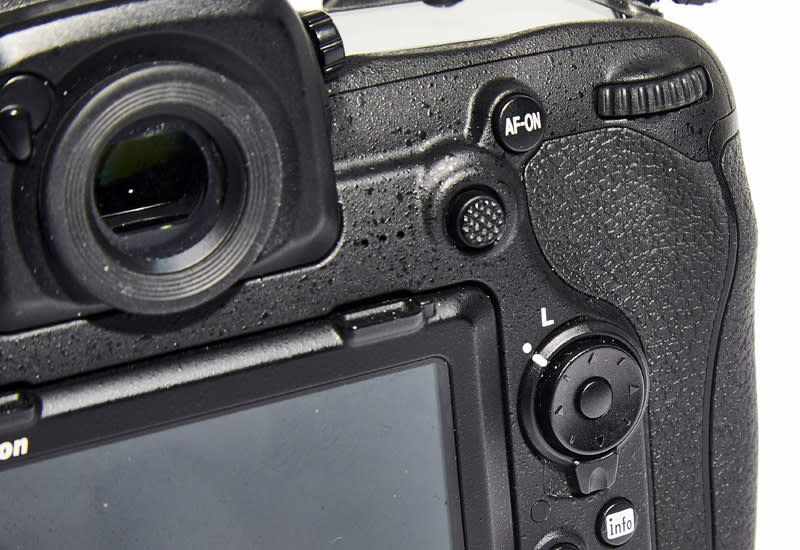
In theory, the somewhat 'low' resolution count (by today’s standards) should allow for larger photosites and hence better high ISO performance. That’s because a larger photosite allows for heat to dissipate faster, hence removing the primary cause of image noise. The other cause of noise is the amount of heat the processor generates when working on images. This seems to also have been improved tremendously from previous APS-C sensor cameras as the D500 boasts a native ISO range of 50-51,200, expandable to a stunning ISO 1,640,000!
Like the D750, the D500 is again built with a monocoque design, bringing the weight down to 860g. The camera is also said to offer the same amount of weather sealing as the full-frame D810, but with the inclusion of in-built Wi-Fi and Bluetooth capabilities. This seems to have meant the elimination of a pop-up flash, though you do get a 3.2-inch LCD that does tilt and touch.
Touch control seems to be limited to the playback menu and during shooting (touch AF or touch to shoot), but you do get an AF selector joystick like what's on the Fujifilm X-T2. However, this seems to be limited to the sole function of AF point selection. The joystick doesn't work with any of the other menus at any point, and actually seems a little too stiff comparatively, so we see many users sticking to the regular D-pad instead.

As we mentioned before the D500 now allows you to illuminate the entire row of buttons that flank the LCD panel when working in low light. That's a first for an APS-C camera by Nikon, and certainly something that can come in handy if you're working in extreme situations. Finally, it is worth noting that the D500 has gone with both XQD and SD as the memory card options, much like on the new D5.
This is both a boon and a bane. XQD allows for much faster operation, as evidenced from the fact that the camera can shoot JPEGs continuously at 10fps without the buffer ever filling up. However, this also means that you have to keep two forms of memory cards and buy into the XQD system.
Battery life on the D500 is rated at a stunning 1,240 shots, but that is largely dependent on how much of the Wi-Fi functions you enable. To combat that, Nikon has added a handy aircraft mode function in the menus, so you can cut off any extraneous battery consumption.

Olympus OM-D E-M1 Mark II
The Olympus OM-D E-M1 Mark II has a new 20MP Live MOS sensor that’s been developed together with Olympus' latest TruePic VIII image processor, ensuring that both work seamlessly together to deliver only the highest performance.
In particular, the TruePic VIII image processor packs two types of quad-core processors on one chip. One is dedicated to image processing, and the other for camera control and computation processes, allowing the camera to read and writes data as efficiently as possible. That’s why it’s able to achieve continuous shooting speeds of 18 fps via the electronic shutter and 10 fps via its mechanical one.
Greater processing speeds means the E-M1 Mark II is able to stay shooting for longer than before. The camera is able to go for 105 frames (JPEG High) before slowing down when shooting at 60 fps (electronic shutter) and can keep shooting till your card is full at 15 fps (mechanical shutter), easily matching or beating the capabilities of professional full-frame cameras like the Nikon D5 and Canon EOS-1D X Mark II.
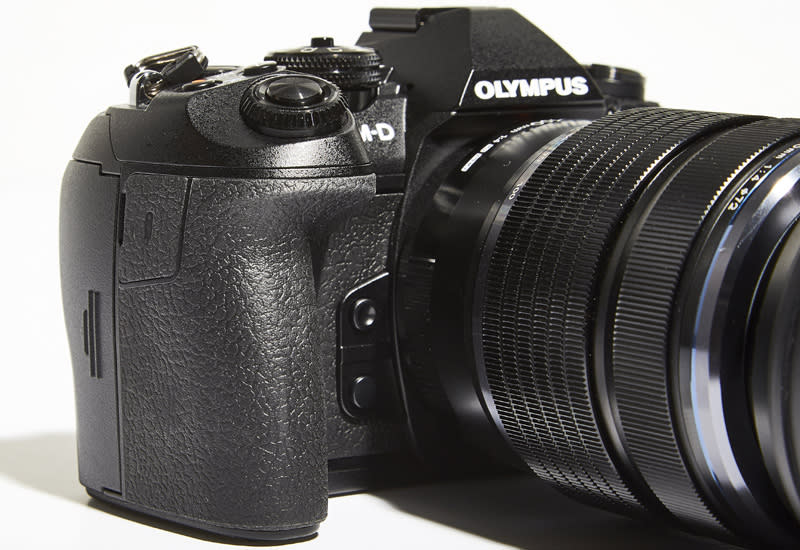
Of course, speed is nothing without precision, and for that Olympus has implemented a Dual FAST AF system which uses a combination of phase and contrast detect. The camera uses both phase and contrast detection focus in single focus mode and switches to phase detect focus exclusively for continuous focus mode thus ensuring optimal performance.
No less than 121-point all cross-type autofocus (AF) points are selectable in the frame, with the AF points laid out across the sensor in an 11x11 grid that covers up to 75% of the frame vertically and 80% of the frame horizontally. Like the EOS M5, the E-M1 Mark II has an AF Targeting Pad mode that allows you to shift AF points using a finger against the rear touch screen LCD. There are also a variety of AF target modes for use with different shooting scenarios, allowing you to further optimize the AF performance.
In-body image stabilization (IS) has long been a calling card of Olympus, and the E-M1 Mark II of course incorporates the latest from their labs. According to Olympus, the 5-axis IS implementation is supposed to give up to 6.5 stops of compensation, and we certainly found that images taken in low light were amongst the best when properly focused. The camera is also now capable of a native ISO range of 200-6400, expandable down to 64 and up to 25,600, bringing it closer in line with the performance of top-end DSLRs.
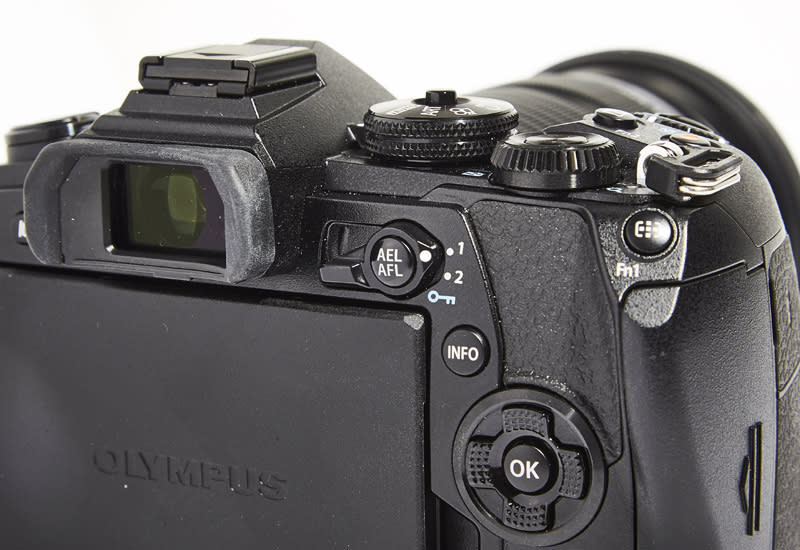
The E-M1 II incorporates a bevy of physical controls onto its body, and many of the existing dials and buttons can be assigned to other functions. There's also a Fn lever that can be set to switch the functions of the main control dials, your shooting modes, or to switch the function of the drive mode and AF mode buttons. It's handy, but does require you to keep track of where the lever is while shooting.
Also, while the rear LCD does incorporate touch for focus and to trigger the shutter, it seems to have been disabled in the menus so you’ll have to use the four-way D-pad over there. That’s not an optimal experience as the menu system is a little too extensive, with sub menus, and sub menus to the sub menus. Basically, your thumb will get quite a work out if you need to adjust something like the function assigned to the Fn1 button, which requires you to go through no less than four menus!
For a more detailed experience of the Olympus OM-D E-M1 Mark II, we've a dedicated six-page standalone review of the camera.

Sony A6500
The Sony A6500 is certainly a surprise introduction for Sony at the end of 2016, given they had already released the A6300 in February that year. Built around essentially the same body, the A6500 uses the same 24MP copper-wired Bionz X sensor as the A6300 before it, but adds in-body image stabilization, touchscreen control, and a faster processor with a deeper buffer.
This allows it to take better advantage of the 11fps continuous shooting rate, as you can now do up to 300 frames in JPEG or 107 frames in RAW. There’s also a new LSI chip that provides even more processing power so you can now instantly review or check focus on images while they’re still being written to the card. With the A6300, you would have had to wait for all images from the burst to be written to card before being able to proceed.
The autofocus system is also unchanged from the A6300, with the same spread of 425 focal plane phase-detection AF points and 169 contrast-detect AF points across the entire image area. That's still amongst the best in its class, but what has improved is that there are now ways to select focus by touch! Sony has finally incorporated touch into the 3.0-inch tilting TFT LCD in the form of their Touch Pad function, which lets you run a finger across the LCD screen to shift focus points.

Given the sheer number of focus points available, I'm sure you can see the advantage of this compared to being restricted to the scroll wheel. That's especially true when the viewfinder is up to your face. In our experience, this seems to be a mixed experience as selecting AF points with the viewfinder up is always relative (you can tap to directly select AF points when using the LCD), and response can be a little laggy.
Despite the touch enabled LCD, we have to note that touch has also not been made an option for navigating the menu systems. What is given, (as a poor alternative) is color coding for the menus so that it is slightly easier to differentiate between menus.
Another key difference from the A6300 is the inclusion of in-body 5-axis image stabilization (IS). Much like what we’ve seen from Olympus, Sony's IS system corrects shake in five axes. It's intelligent enough to work concurrently with lenses that have their own IS systems so that they don't interfere with each other, and Sony rates the system as being able to compensate for up to five stops of hand shake.
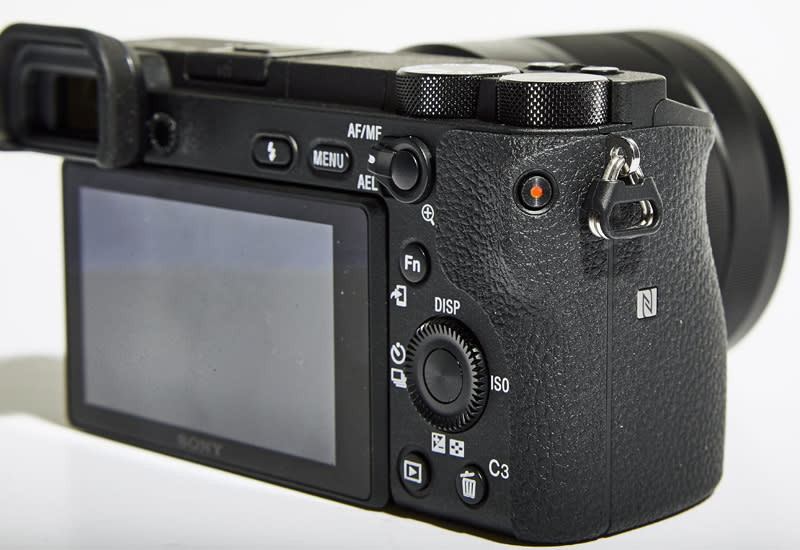
The A6500 also gets an extra custom function button compared to the A6300, with the layout shifted to be more akin to what you might see on the a7 series. This brings the total number of customizable function buttons to 10, which, combined with the Fn menu should save you from having to go into the menus much if properly configured.
It also seems to be a little larger than the A6300 too, with an even more generous handgrip. It's about 20mm deeper than the A6300 while being the same height and width. (The A6500 measures 120.0 x 66.9 x 53.3mm to the 120.0 x 66.9 x 48.8 mm of the A6300). Battery life seems to have decreased too, as the camera can now only manage about 350 frames on a single charge as opposed to the 400 frames on the A6300. That's probably the toll from the extra processor and IS system, and may explain why Sony released such similar models within the same year.
Imaging Performance
Given that we were looking for the best prosumer camera, we wanted to adequately test out how well the cameras performed in a variety of situations. Thus, we went to several areas over the course of a day, taking pictures in both good light and bad. This gave us a feel for how the autofocus systems performed, the cameras' noise characteristics at different ISO levels, and also their color biases. We also managed to take a look at how the camera’s rendered skin tone at higher ISOs – something that’s definitely important for professional work.
As a quick recap, all of these cameras embody some of the latest tech from their respective companies. The D500 has the lowest stated resolution at 20.9MP, but this time round it's joined by the OM-D E-M1 Mark II with a 20.4MP M43 sensor that has an ISO rating of 64-25,600. The EOS M5, X-T2, and A6500 all sport 24MP sensors, but the EOS M5 only goes up to ISO 25,600 while the X-T2 and A6500 both go up to ISO 51,200.
In terms of focusing points, the A6500 again leads the way with 425 phase detect points and 169 contrast detect points (594 total points), followed by the X-T2 (325 total points), the O-MD E-M1 Mark II (242 total points), D500 (153 points), and finally the EOS M5 (49 points). Looking at the disparity between the sheer number of AF points between the EOS M5 and the rest of the competition, you really get a sense of just how much more effort Canon needs to put into its Mirrorless cameras to keep up with the competition.
Still it isn't all about focus points; the speed of the image processing engine certainly determines multiple factors of a camera's performance. That's everything from the maximum continuous shooting frame rate, the responsiveness of the camera, to even the quality of the high ISO performance, so it's good to see the latest processors from each company at play here. (That's Canon's Digic 7, Fujifilm's X-Processor Pro, Nikon's EXPEED 5, Olympus' TruePic VIII and Sony's Bionz X) if you're wondering.)
So how did each camera perform? Let's jump right in and find out.
Beach scene
Taken around 11am on a sunny morning, this beach scene offered a good look at how the cameras dealt with a scene with extreme highlights. All the cameras were set to their evaluative autofocus modes, with ISO set to their lowest base setting and the cameras left in Program mode.
Canon EOS M5


Fujifilm X-T2


Nikon D500


Olympus OM-D E-M1 Mark II


Sony A6500


Most of the autoexposure systems of the cameras in the shootout opted to underexpose to preserve detail in both the highlights and the shadows, but the D500 exposed closer to reality, leveraging on its ability to go down to ISO 100 perhaps.
On the other hand, there was a definite tinge of yellow to the image from the D500, while the colors captured on the EOS M5 seemed slightly washed out with a little too much grey. In contrast, the images from the A6500, the OM-D E-M1 Mark II and the X-T2 were more accurate to life. In particular, the greens from the X-T2 seemed more vibrant than what was captured by the other cameras.
One surprising note about this particular scene though, is that the EOS M5 had issues getting focus for this scene using Face+Tracking mode. The camera simply wouldn't get focus when aimed at the lit sky, so we were forced to focus on the sea instead.
Nutcrackers in the Flower Dome
Moving on to some images taken in open shade, we take a look at the cameras' ability to resolve detail with these displays of giant spinning nutcrackers in the Flower dome at Gardens by the Bay. The sky was overcast, resulting in muted ambient lighting with highlights from the spotlights placed amongst the displays.
Canon EOS M5


Fujifilm X-T2


Nikon D500


Olympus OM-D E-M1 Mark II


Sony A6500


With this scene, the native white balance biases of the cameras again showed through, with the images from the D500 and the EOS M5 again coming in warmer than the rest. In this particular instance, the X-T2 is noticeably too blue, while the OM-D E-M1 Mark II and the A6500 are closer to life.
The OM-D E-M1 Mark II, A6500 and the X-T2 impressed with the amount of detail resolved. Looking at the headpiece of the nutcracker in the center, the fine detail on the crown showed up the most on the shots from these three cameras. Given that these were all taken handheld in dim light, we'd say the in-camera stabilization of the OM-D E-M1 Mark II definitely aided here.
A very slight bit of color noise can be detected in the image from the A6500, and flaring from the lights in the back is also more obvious as opposed to the images from the OM-D E-M1 Mark II and the X-T2.
Singer in low light
This next scene – a performance by jazz singer/songwriter Mariam John in the open area of the Esplanade - offered a great chance to test both the low light capabilities of the cameras and the ability of their continuous focus systems to catch up to a moving subject.
Canon EOS M5
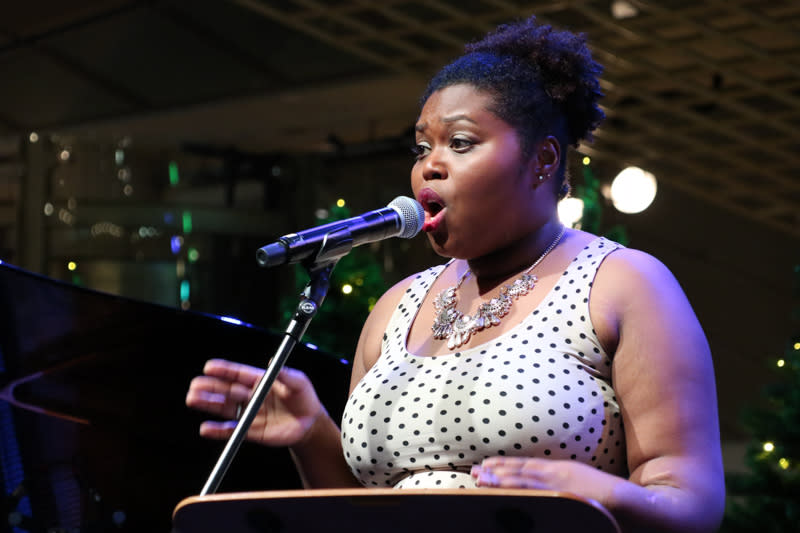

Fujifilm X-T2

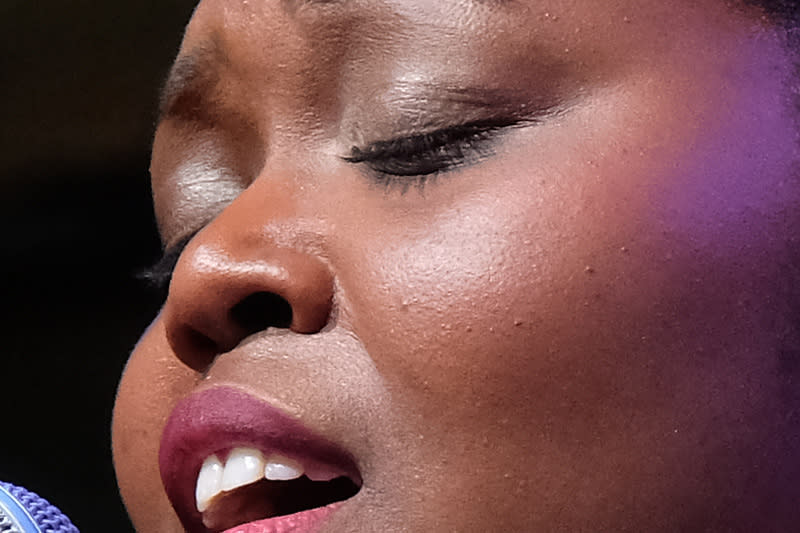
Nikon D500

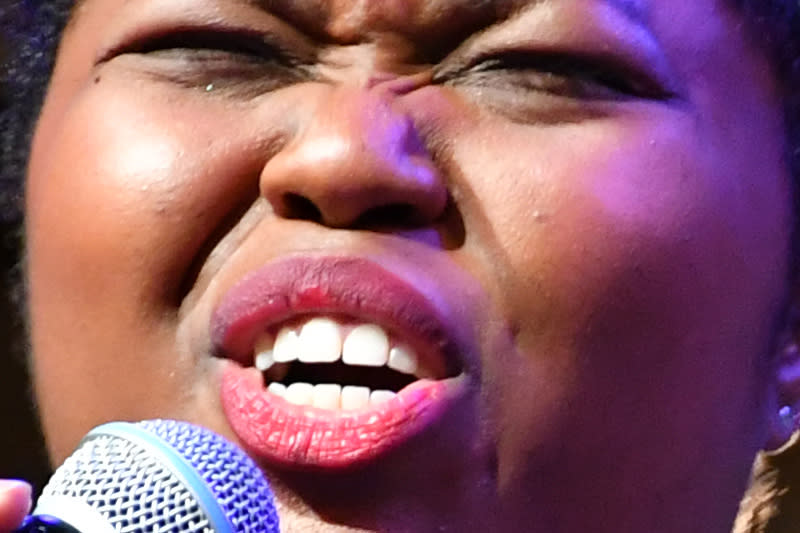
Olympus OM-D E-M1 Mark II

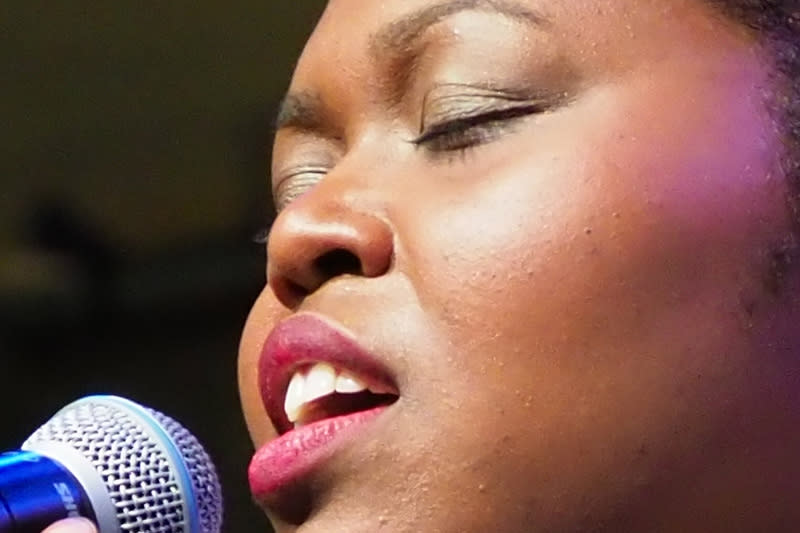
Sony A6500

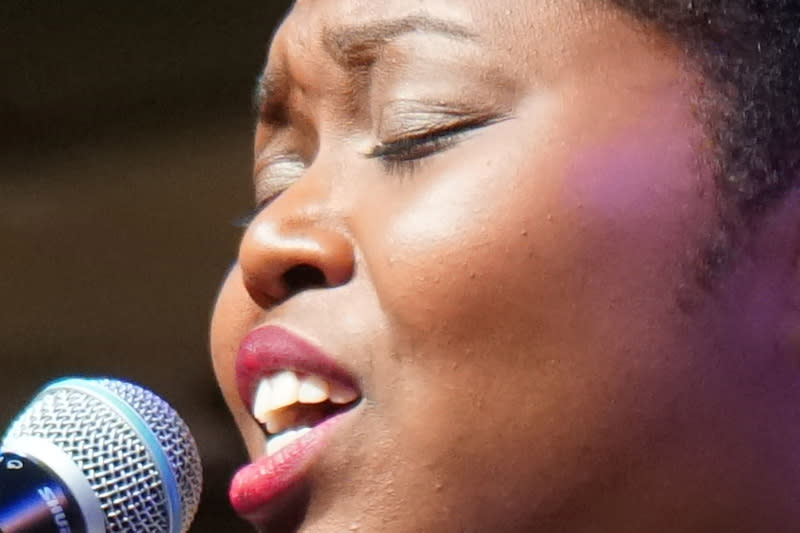
All the cameras were set to scene focus with face detect turned on if available. Shutter speed was kept to 1/80s to ensure that handshake didn't come into play, and the cameras were set at their highest burst rate to best capture the action.
With this scene, we fully expected the D500 to come in with the best shots given the speed of capture and the fact that the camera had the highest maximum ISO setting. However it seems the camera had a tendency not to select the best focus point, with the point of maximum sharpness often falling on the microphone instead of on the singer.
The differences in the amount of detail seen on her skin speak to the rendering capabilities of each camera. Comparing the images side by side, it's apparent that the X-T2 turns in the best detail. The creases in her lip and texture on her cheeks can clearly be seen. The next best image probably comes from the A6500, but even then it's not close. In fact, all the images from the other cameras have fairly large bands of areas on Mariam’s face where the over-aggressive noise reduction has turned it into mush.
Studio Scene (low ISOs)
Finally, we move on to our studio scene. This is generally where we find out how usable the ISO settings on each camera is, with the lighting fixed and every camera shooting at a fixed aperture of f/8, varying the shutter speed to adjust for exposure as we increase the ISO sensitivity. Images from ISO 400 are shown here as that's the point from which you can start to make out differences in image quality.
Canon EOS M5

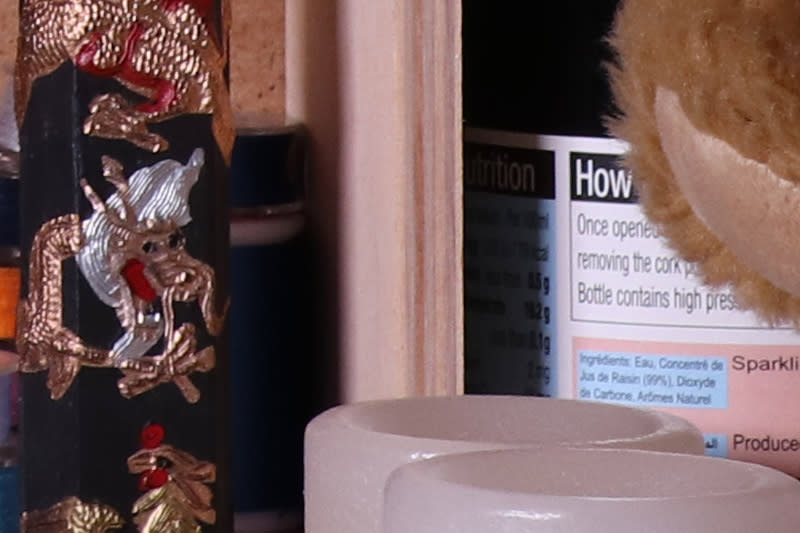
Fujifilm X-T2
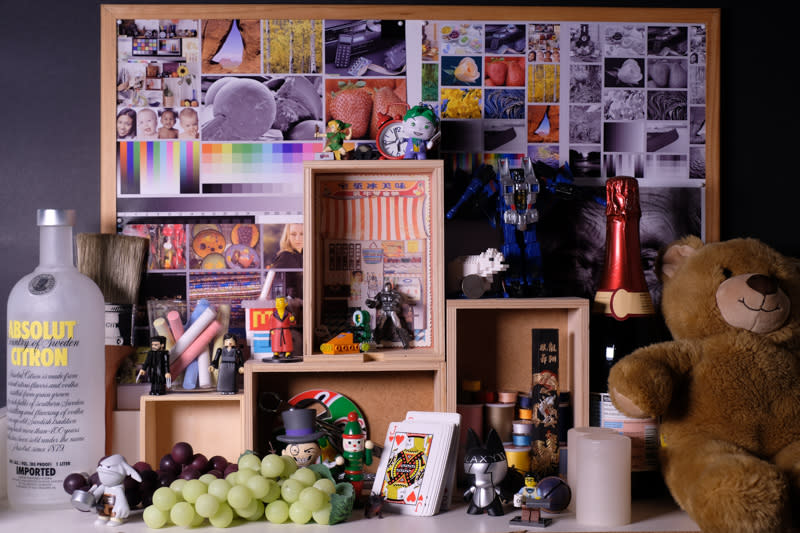
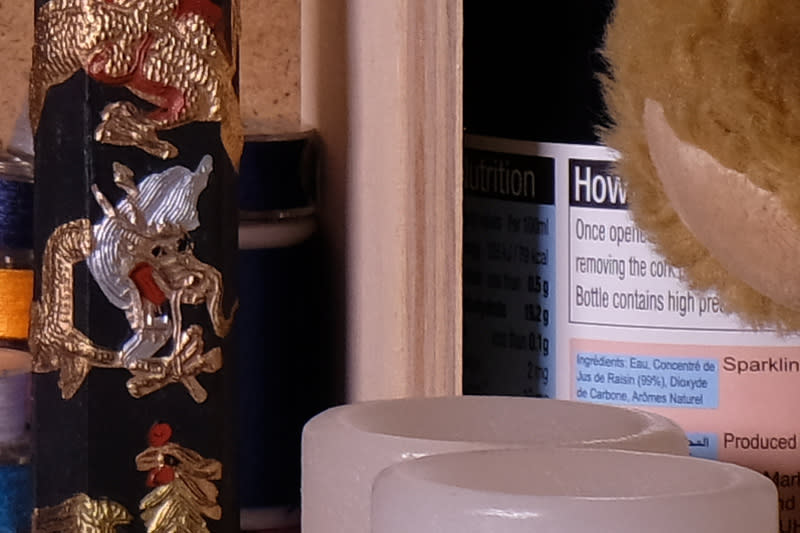
Nikon D500


Olympus OM-D E-M1 Mark II

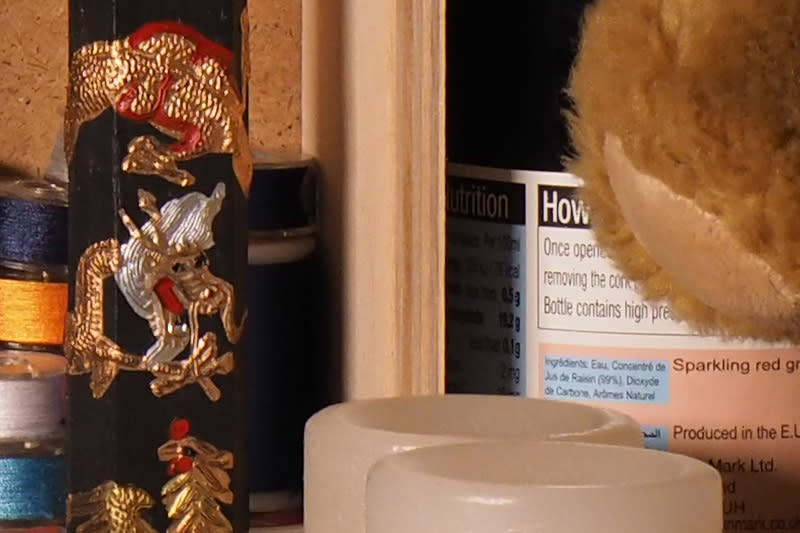
Sony A6500

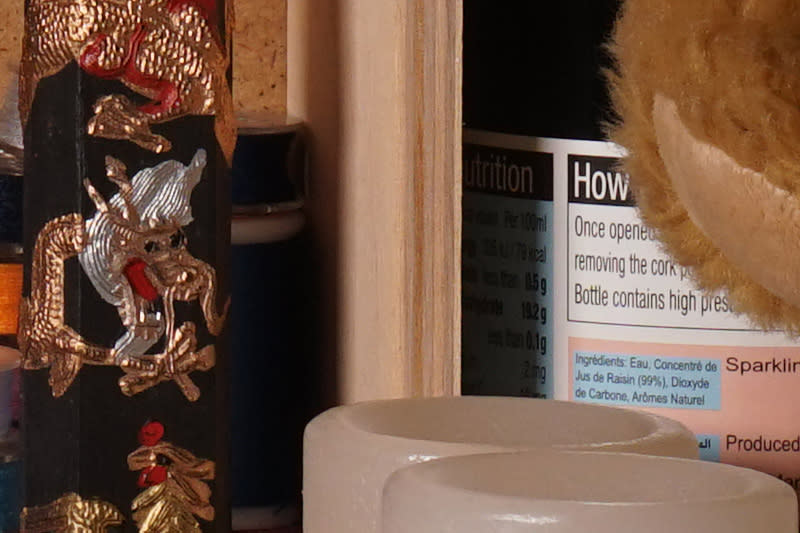
In this test, we were surprised to see how close the cameras performed at the lower ISOs, with the OM-D E-M1 Mark II impressing us as it has a much smaller sensor than the rest. In terms of edge to edge and center sharpness, this Micro Four Thirds camera slightly edged out the larger sensor EOS M5 and D500, with better detail resolution in the center area. The images with the best detail however, came from the A6500 and the X-T2. Both images exhibit obvious color biases though – the image from the A6500 seems a little too magenta to be accurate, while the image from the X-T2 has a bit too much blue.
Studio Scene (high ISOs)
Canon EOS M5


Fujifilm X-T2
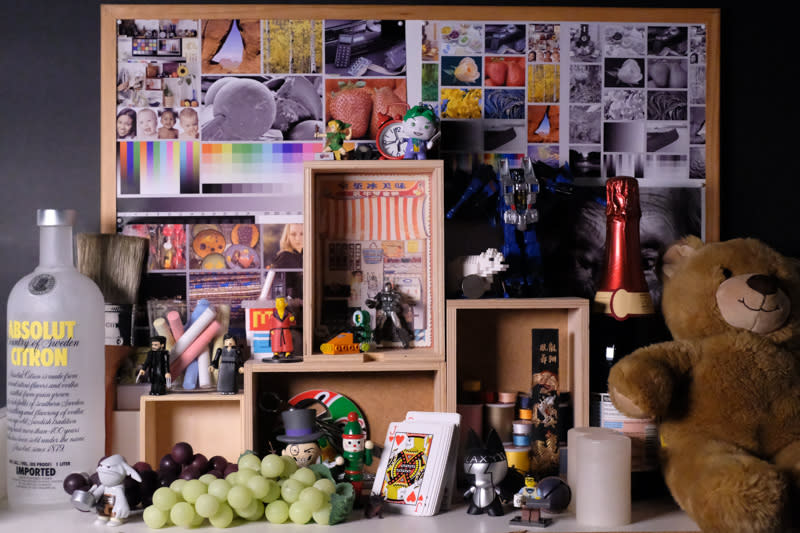
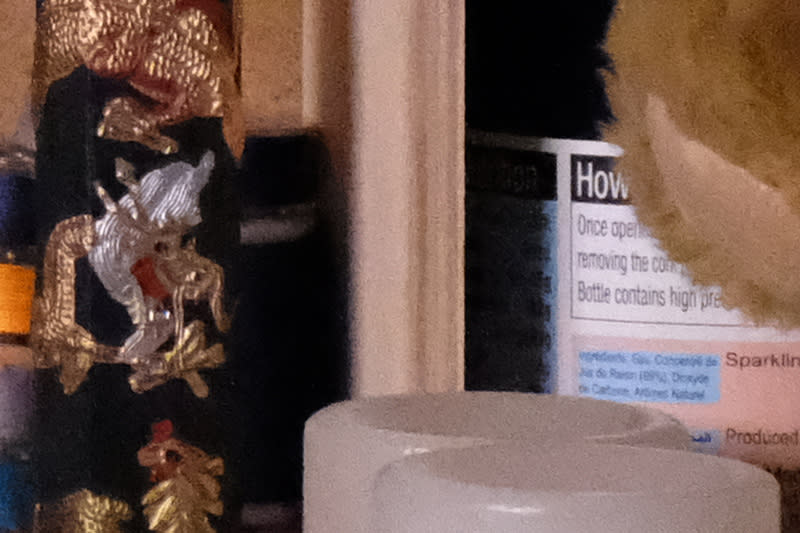
Nikon D500


Olympus OM-D E-M1 Mark II


Sony A6500

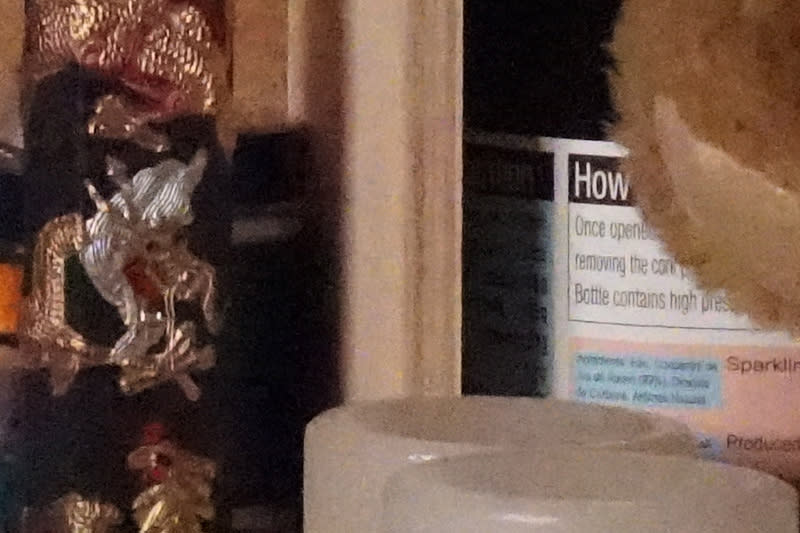
At the higher ISOs, the A6500 and the X-T2 again separated themselves from the pack. We do think the X-T2 does a slightly better job though; as the writing on the bottle label remains more legible than that on the image from the A6500 – you can just about make out some of the writing on the blue ingredients section.
Predictably the OM-D E-M1 Mark II didn't fare well given that it has the smallest sensor in the group. Relatively speaking, images at ISO 25,600 are a noisy mush. Having said that, we were still surprised to see that it actually out-performs the larger sensor of the EOS M5, which exhibited all sorts of noise across the frame.
The Best Prosumer camera is…

Given how well the Nikon D500 performed in last year's test, this was a much closer result than we expected. However, the Fujifilm X-T2 consistently turned in better images with better detail and less noise in all the situations we put it in. The inclusion of the focus-selector joystick helped both in terms of selecting focus points and with navigation of menus, letting it bridge the gap in usability compared to the competition. And while it doesn't have the biggest buffer, the ability to go for 42 frames at 14 fps is certainly sufficient when you add the scary accuracy of the camera's autofocus system.
It's also able to produce 4K videos with support for output to external monitors and audio monitoring, making a better all-rounder. The support for dual cards also gives it an advantage over the A6500 for professionals, as it allows for immediate in-camera backup of your images. Compared to the D500, it's also about S$400 cheaper while offering the same level of weather sealing and robustness, so with all the right boxes checked, we declare the Fujifilm X-T2 the winner of this shootout.
Canon EOS M5 | Fujifilm X-T2 | Nikon D500 | Olympus | Sony A6500 | |
|---|---|---|---|---|---|
8.0 | 9.5 | 9.0 | 8.5 | 9.0 | |
8.5 | 8.0 | 8.0 | 8.5 | 8.0 | |
8.0 | 8.5 | 8.5 | 9.0 | 8.5 | |
9.0 | 8.5 | 8.0 | 8.0 | 8.0 | |
8.5 | 8.5 | 8.0 | 7.5 | 8.5 | |
8.0 | 9.0 | 8.5 | 8.5 | 8.5 | |
S$1,499 | S$2,599 | S$2,999 | S$2,848 | S$1,949 |
 |  |
 |  |
 |  |
 |  |
 |  |






